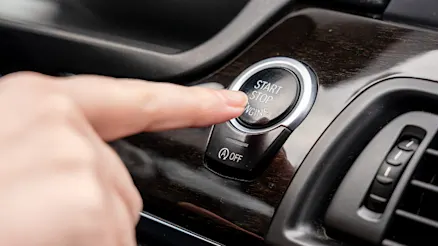
Why does my car behave differently when I start it in the morning?
Ever notice your car feels different in the morning? Learn why cold starts affect performance and how to keep your car running smoothly year-round.



Ever notice your car feels different in the morning? Learn why cold starts affect performance and how to keep your car running smoothly year-round.

Regularly checking your tyre pressure is crucial to your vehicle’s safety, fuel economy and optimal driving.

Looking for the perfect gift for the car enthusiast in your life? Carma’s experts have you covered.
When it comes time to sell your car, there’s one key factor that can make the process smoother, faster and more financially rewarding. The answer is: regular maintenance. While it might seem like a chore, keeping up with your car’s servicing schedule and performing routine upkeep can pay off when you’re ready to part ways with your car. In this article, we’ll explore what resale value is, why consistent servicing makes such a difference, and which DIY tasks you can do regularly to help your car stand out to future buyers.
Resale value refers to how much money you can expect to get when you sell your car, whether privately or as a trade-in at a dealership. There’s a few factors that can contribute to a vehicle’s resale value, including its age, kilometers travelled, condition, service history, demand in the used car market and whether it’s been involved in any accidents. Some car brands hold their value better than others, but even the most popular models can see their value dip if they’ve been neglected or poorly maintained.
A strong resale value means more money in your pocket when it’s time to upgrade or downsize. It can also make your car more attractive to potential buyers, helping it sell quicker and with less hassle.
Routine servicing does more than just keep your car running well. It also creates a record that shows potential buyers the car has been looked after properly. A full service history can increase a car’s resale value and reassure buyers they’re not taking on any hidden problems.
Here’s why regular servicing makes a difference when you set out to sell your car:
Many buyers (especially those spending several thousand dollars on a used car) will ask for a service logbook or records of maintenance. Dealerships will also assess the condition and history of your vehicle before offering a trade-in price. A full service history and well-maintained engine can lead to a higher valuation, especially if you’ve got the receipts to show for it.
A complete, well-documented history shows the car has been cared for, which lowers the risk of mechanical problems in the near future. This kind of confidence often translates into a higher sale price.
Regular maintenance allows mechanics to detect issues early, before they become major (and expensive) problems. If small problems are fixed straight away, it prevents them from turning into something that could reduce your car’s value down the line or put off future buyers. For example, replacing worn brake pads during a routine service is a much cheaper fix than replacing damaged brake rotors after the pads have worn too thin.
A car that’s been regularly serviced typically drives better and feels more solid than one that hasn’t. It’s quieter, smoother and generally more pleasant for potential buyers to test drive. That first impression during a test drive can make all the difference when it comes to negotiating the sale price.

While major servicing should be left to qualified mechanics, there are many smaller maintenance tasks that car owners can take care of at home. These small steps can help preserve your car’s condition, keep it looking great and reduce wear and tear over time.
Engine oil, coolant, brake fluid and windscreen washer fluid should all be checked regularly. Keeping these topped up and at the correct levels not only helps your car perform better but also prevents long-term damage. For example, running low on coolant can cause your engine to overheat, potentially leading to costly repairs. Need some help on this? We’ve got just the guide to car fluids for you.
It might seem superficial, but regular cleaning inside and out helps maintain the vehicle’s condition. Dirt, bird droppings and tree sap can damage paint if left too long, while built-up grime inside can make a car feel neglected. A clean, fresh-smelling interior and well-maintained exterior create a much better impression when it’s time to sell.
Tyres that are unevenly worn, flat or bald not only affect safety and performance, but also suggest a lack of maintenance. Checking your tyre pressure monthly and inspecting tread depth can extend tyre life and reduce fuel consumption. It’s also a simple way to demonstrate care when potential buyers inspect your vehicle.
Worn wiper blades are a common issue and one that’s easy to fix. They’re inexpensive and quick to replace, and doing so improves visibility during wet weather. It’s a small detail that can make your car seem more ‘ready to go’ during a test drive.
Dashboard warning lights are there for a reason. If one appears, it’s important to investigate the cause rather than ignore it. Not only can ignoring these warnings lead to bigger mechanical issues, but they’ll also raise red flags for any potential buyer who notices them during an inspection or drive.
When it’s time to sell your car, having a well-maintained vehicle with a full service history can significantly boost its appeal and resale value. Regular maintenance not only extends your car’s lifespan, but it also shows prospective buyers that you’ve cared for your vehicle properly, making them more likely to trust that it’s a sound investment. And when it’s time to sell, you know who to call (it’s us).